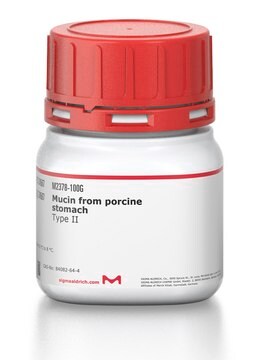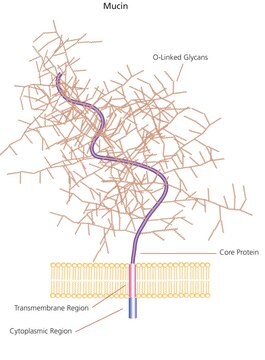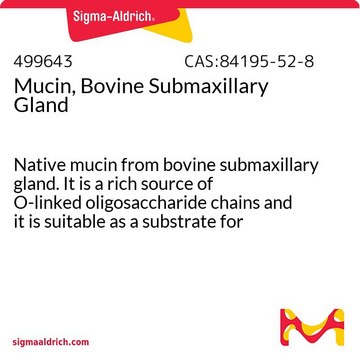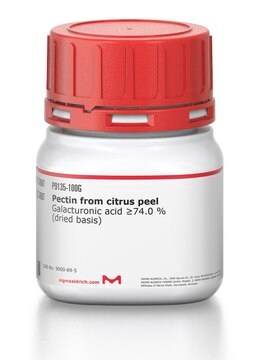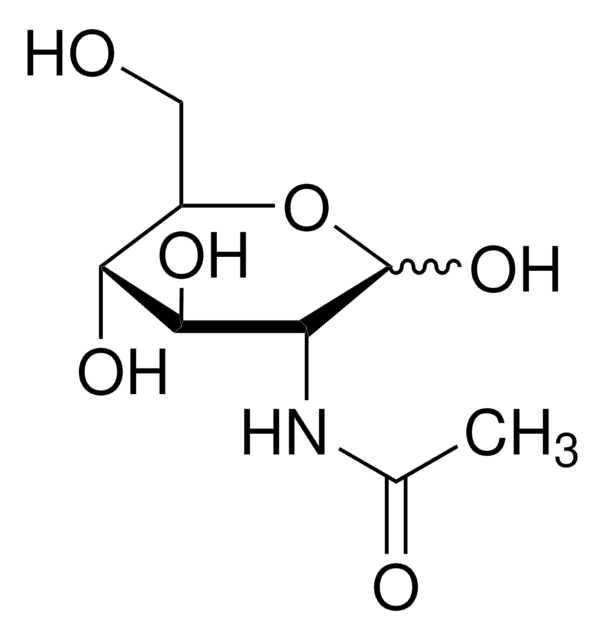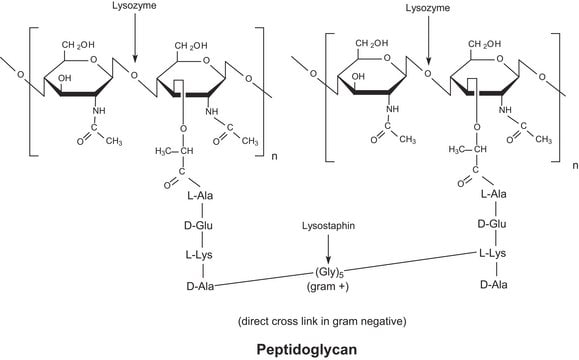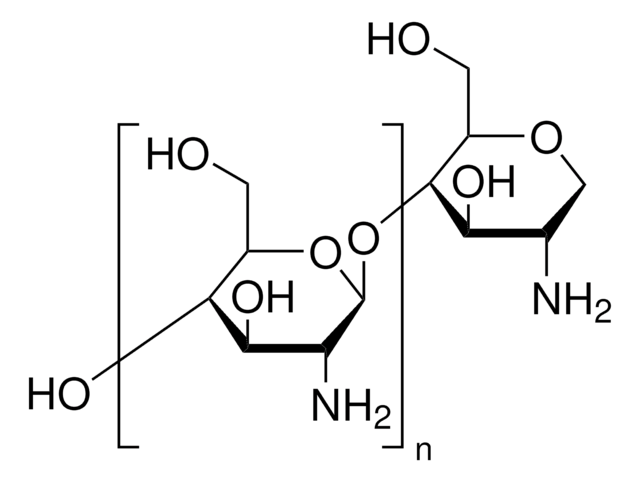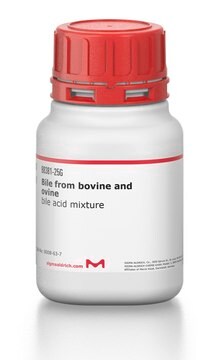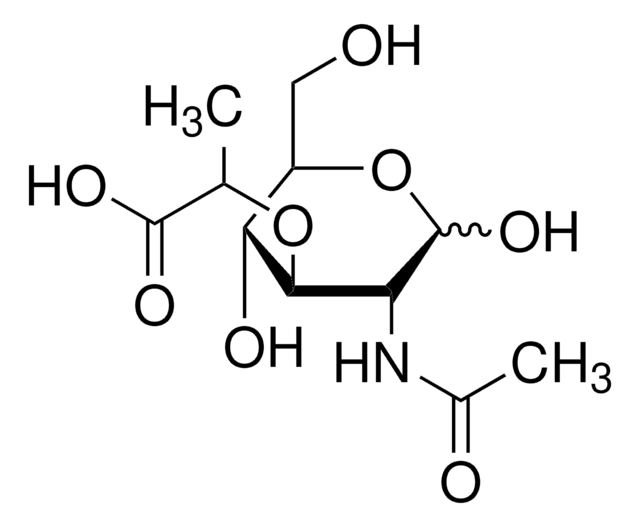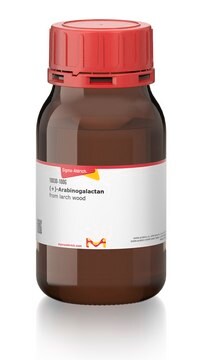M1778
Mucina
Type III, bound sialic acid 0.5-1.5 %, partially purified powder
Sinonimo/i:
MUC
Autenticatiper visualizzare i prezzi riservati alla tua organizzazione & contrattuali
About This Item
Prodotti consigliati
Origine biologica
Porcine stomach
Tipo
Type III
Stato
partially purified powder
Composizione
bound sialic acid, 0.5-1.5%
tecniche
microbiological culture: suitable
Solubilità
NaOH: soluble 20 mg/mL
Temperatura di conservazione
2-8°C
Cerchi prodotti simili? Visita Guida al confronto tra prodotti
Descrizione generale
Mucins or mucus glycoproteins are the main macromolecular components of mammalian mucus. It was also used in a study to evaluate the sputum smears concentrated by cyto-centrifugation for detection of acid-fast bacilli.
Applicazioni
Mucin from porcine stomach was used in studies on the binding site of the galactose-specific agglutinin PA-IL from Pseudomonas aeruginosa.
Azioni biochim/fisiol
Mucus forms the protective cover for all epithelial surfaces. The major structural component of mucus is gel-forming mucins. The mucus layer covering the intestinal epithelium has the MUC2 mucin as its central molecule. MUC2 is produced by goblet cells.
Nota sulla preparazione
Prepared according to the method of Glenister, et al., for use in complex growth media for dental plaque bacteria.
Codice della classe di stoccaggio
11 - Combustible Solids
Classe di pericolosità dell'acqua (WGK)
WGK 3
Punto d’infiammabilità (°F)
Not applicable
Punto d’infiammabilità (°C)
Not applicable
Dispositivi di protezione individuale
Eyeshields, Gloves, type N95 (US)
Scegli una delle versioni più recenti:
Possiedi già questo prodotto?
I documenti relativi ai prodotti acquistati recentemente sono disponibili nell’Archivio dei documenti.
I clienti hanno visto anche
Anastasia Matthies et al.
Applied and environmental microbiology, 74(15), 4847-4852 (2008-06-10)
The metabolism of isoflavones by gut bacteria plays a key role in the availability and bioactivation of these compounds in the intestine. Daidzein and genistein are the most common dietary soy isoflavones. While daidzein conversion yielding equol has been known
Helen Rose et al.
The Journal of antimicrobial chemotherapy, 63(3), 502-510 (2009-01-21)
The Burkholderia cepacia complex (Bcc) species are important opportunistic pathogens with intrinsic antibiotic resistance. They are also well known as contaminants of disinfectants, yet their biocide susceptibility has not been studied in detail. We investigated Bcc biocide susceptibility and correlated
Kenny C Mok et al.
mBio, 11(6) (2020-12-10)
The beneficial human gut bacterium Akkermansia muciniphila provides metabolites to other members of the gut microbiota by breaking down host mucin, but most of its other metabolic functions have not been investigated. A. muciniphila strain MucT is known to use
Gabriel M F Almeida et al.
mBio, 10(6) (2019-11-21)
Metazoans were proposed to host bacteriophages on their mucosal surfaces in a symbiotic relationship, where phages provide an external immunity against bacterial infections and the metazoans provide phages a medium for interacting with bacteria. However, scarce empirical evidence and model
Leyuan Li et al.
Microbiome, 8(1), 33-33 (2020-03-13)
Human-targeted drugs may exert off-target effects or can be repurposed to modulate the gut microbiota. However, our understanding of such effects is limited due to a lack of rapid and scalable assay to comprehensively assess microbiome responses to drugs. Drugs
Il team dei nostri ricercatori vanta grande esperienza in tutte le aree della ricerca quali Life Science, scienza dei materiali, sintesi chimica, cromatografia, discipline analitiche, ecc..
Contatta l'Assistenza Tecnica.